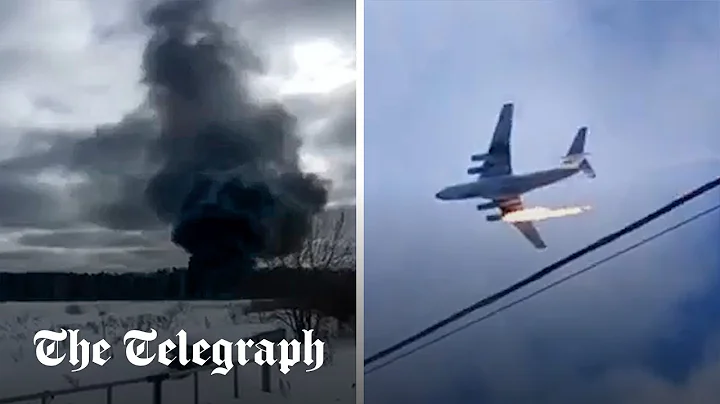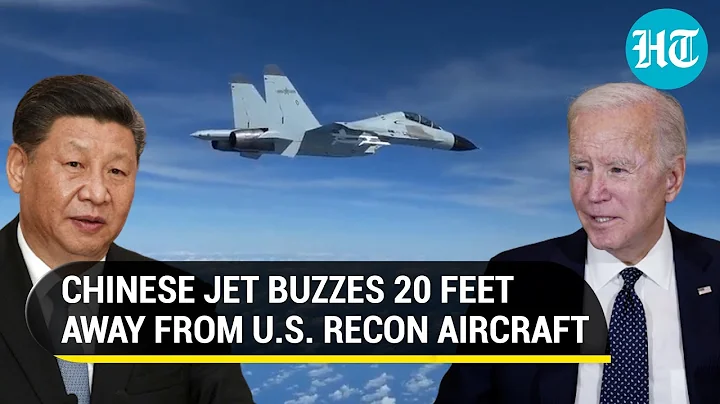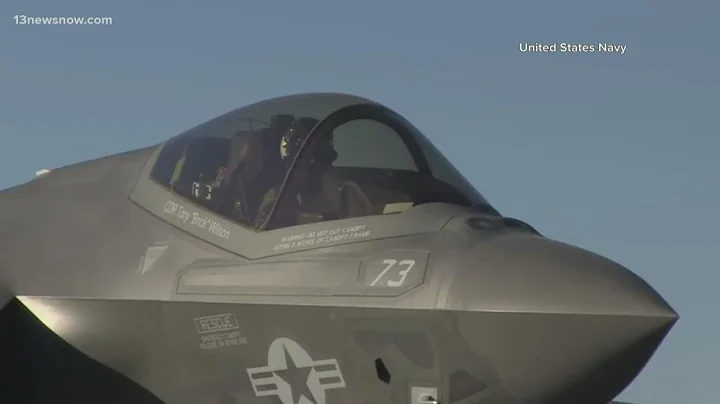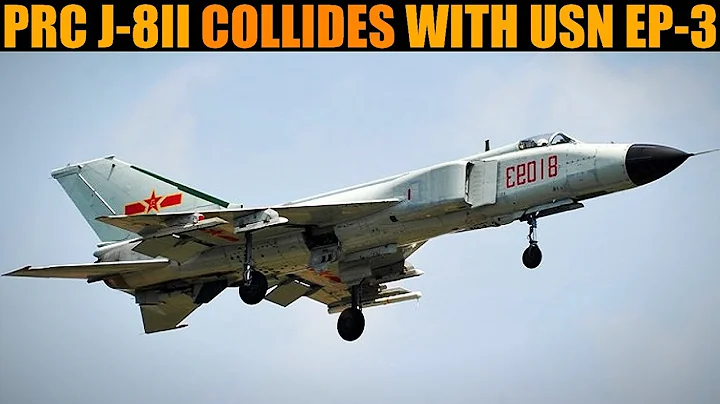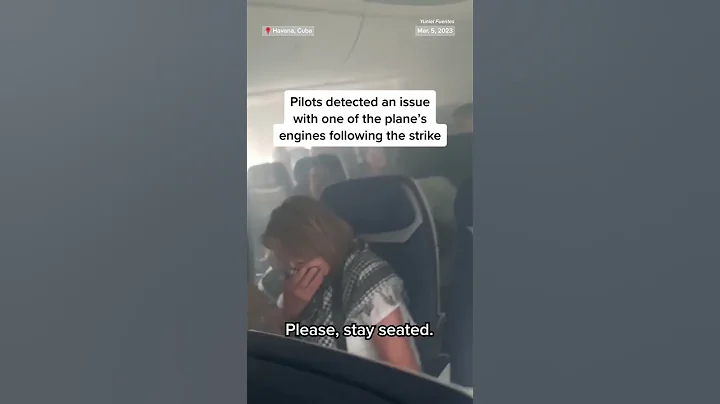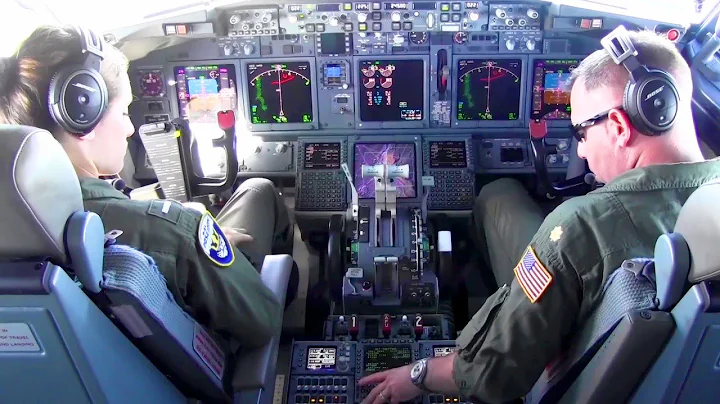Foreword
On April 1, 2001, the "South China Sea Plane Collision" incident occurred that shocked my country and foreign countries. On that day, a US military EP-3 electronic reconnaissance aircraft conducted close reconnaissance over the waters of the South China Sea near Hainan Island, China. We Two J-8II fighter jets of the Naval Aviation Force were ordered to attack and drive away. At that time, the two J-8IIs of our army did not make any significant moves to drive away. They just accompanied the EP-3 electronic reconnaissance aircraft and made a radio call asking it to leave. During the process, the EP-3 electronic reconnaissance aircraft suddenly appeared on the ground. The flight direction was changed in the air and it collided with a J-8II fighter of our naval aviation force, causing the J-8II fighter to crash and the pilot died heroically!

Screen restoration of the South China Sea plane collision incident
The ability of the People's Liberation Army to drive away foreign aircraft in 2001
After the "South China Sea plane collision" incident, our country expressed strong indignation against the United States. The whole country united to launch a vigorous denouncement of the United States. The United States had to Lowering its proud head, from the initial bite to the expression of regret in the middle, the United States finally had to express its apology for this incident and make corresponding compensation. However, judging from the equipment strength of the PLA Air Force and Naval Aviation at that time, it was still very difficult to deal with such unfriendly reconnaissance and other operations by the US military.

The Chinese Air Force Su-27SK fighter
At this point in 2001, The Chinese Air Force 's third-generation fighter still had more than 70 Su-27 fighter jets . The domestically assembled version of the Su-27 (J-11A) and the Su-30MKK imported from Russia were at the end of 2000. It had just been delivered and had not yet formed a mature combat capability. The air force and naval aviation mainly relied on the fighter jets -7 and -8. The total number of these two fighter jets was about 800. In addition to a small number of third-generation aircraft, J-7 and J-8, the Air Force and Naval Aviation at that time also had a large number of early-model fighters such as the , J-6, , etc. However, the combat radius and performance of these fighters were comparable to those of the U.S. Navy’s F-14 and F-14s at the time. /A-18 carrier-based aircraft is more than one generation behind!

The Chinese Air Force's J-6 fleet
At this time in 2001, the People's Liberation Army mainly relied on the third-generation Su-27 and the second-generation J-7 and J-8 fighter jets in its operations to drive away foreign aircraft and safeguard the sovereignty and security of the motherland's airspace and territorial waters. However, At that time, the Air Force had less than 100 third-generation aircraft with mature combat capabilities. Even these less than 100 third-generation aircraft still had to undertake heavy tasks such as training pilots and preparing for combat readiness in Taiwan. For example, the Air Force imported 76 aircraft from Russia in the early days. More than half of the Su-27 fighter jets are two-seater Su-27UBK5s. The purpose is to cultivate more qualified pilots who can fly third-generation aircraft as soon as possible.

Chinese Air Force Su-27UBK fighter jet
Our country has a long coastline and millions of square kilometers of territorial waters. It is surrounded by multiple air and sea forces including the Japan Air Self-Defense Force and the US Seventh Fleet Carrier Air Wing. In fact, in At this time in 2001, the maritime air defense tasks faced by the People's Liberation Army were already very heavy. With the number of third-generation fighter jets stretched, a large part of the task of driving away external aircraft at that time had to rely on the two second-generation aircraft, J-7 and J-8. , but a common problem faced by these two second-generation aircraft is that the range is too short.

The Chinese Air Force's J-7 fleet
The combat radius of the J-8 fighter is only 800 kilometers, and the combat radius of the J-7 fighter is only 600 kilometers. Take the naval aviation J-8II's drive away from an EP-3 reconnaissance aircraft in 2001 as an example: At that time, the EP-3 reconnaissance aircraft was located over China's exclusive maritime economic zone 110 kilometers southeast of Hainan Island. Two J-8IIs flew away from Hainan Island. When the land airport took off and rushed to the airspace where the EP-3 reconnaissance aircraft was located, it basically used one-third of the combat radius. You must know that this is still in the airspace near Hainan Island. If it is more than 300 kilometers away from Hainan Island, When an external aircraft was driven away from near the Xisha Islands, the J-8 fighter jet flew over and almost used half of its fuel.

Large foreign military fighters like the EP-3 have a range of nearly 6,000 kilometers. If the opponent does not leave immediately after being driven away, the J-8 cannot fly with it for a long time and can only use multiple batches of fighter jets to take over. As for the method of expulsion, when the J-8 participates in air rights protection near the Nansha Islands, it can only rely on the combination of H-6 and J-8. At that time, due to the short range of the J-7 and J-8, the People's Liberation Army often dispatched J-H-7 fighter bombers when performing missions to drive away foreign aircraft. For example, around 2000, the J-H-7 often flew with the Air Self-Defense Force in the airspace near the East China Sea in my country. The F15J "overtook"!

The J-H7 fighter jet patrols the sea
The J-H-7 has a sufficient range and a combat radius of up to 1,600 kilometers. However, the J-H-7 is a fighter-bomber after all. Its maximum flight speed is only Mach 1.7, which is not as fast as those around our country. The F15J and F/A-18 and other models. In fact, when performing the task of driving away foreign aircraft, the most suitable model is a fast fighter like the J-8 or a fighter with strong maneuverability like the J-7. However, the range of these two fighters is too short, and the range of the J-H-7 is sufficient. It is practical, but its maneuverability and flight speed are slightly insufficient. At that time, the three-generation Su-27 fighter jets were fine in all aspects but the number was too small. Therefore, at this point in time around 2001, our air force and naval aviation were carrying out long-range eviction. I can only barely cope with the tasks of the external machine!

In 2001, the number of third-generation aircraft of the Air Force was insufficient.
In 2022, the People’s Liberation Army’s ability to drive away external aircraft.
It has been a full 21 years since the “South China Sea Aircraft Collision” incident. In these 21 years, the strength of the People’s Liberation Army has undergone earth-shaking changes, especially in China. The overall strength of the air force and naval aviation has improved rapidly, and the equipment and combat systems have undergone qualitative changes compared to 21 years ago. Compared with 21 years ago, the People's Liberation Army can now easily complete the task of driving away foreign aircraft!

The Chinese Air Force’s J-11 fleet
Although our air force and naval aviation are still equipped with some second-generation fighter jets, the second-generation aircraft such as J-7 and J-8 have long been "relegated to the second line". Currently, when the People's Liberation Army performs the task of driving away external aircraft Mainly used are heavy fighter aircraft such as the J-11 series or the J-16. These two fighters have long range and strong maneuverability. Whether it is driving away large foreign military aircraft such as the EP-3 or fighters such as the F15J, they can do the job. , and now our air force and naval aviation have six third- and fourth-generation heavy fighter jets including the J-11 series, Su-30 series, J-15, J-16, J-20, and Su-35, with a total of more than 800 aircraft. Not to mention driving away one or two In terms of external aircraft, even the two aircraft carrier battle groups that came over had less than 100 fixed-wing carrier-based fighter jets. With the current strength of our air force and naval aviation, they can easily cope with it.

Chinese Air Force J-16 fleet
Secondly, the current combat system of the People's Liberation Army has become more and more advanced and mature. At this point in time in 2001, my country's control of external maneuvers in the airspace near its territorial waters mainly relied on land-based early warning radar detection. Today, the Chinese Air Force and Naval Aviation have equipped dozens of advanced s including the air marshal 500 and air marshal 2000. Early warning aircraft , the range of these early warning aircraft can easily cover the South China Sea, which is farthest from mainland my country. Any foreign aircraft will be discovered and locked in time before it approaches our country’s airspace and territorial waters, and fighter planes will be dispatched in time to intercept. The efficiency is compared to 21 years ago Huge improvement ahead.

Air Police 500 early warning aircraft and J-11 jointly train
Another point is that 21 years ago, the South China Sea was the most difficult sea area for my country to safeguard air rights and maritime rights. The South China Sea is vast and fighter jets taking off from Hainan Island cannot carry out all-weather patrols in the South China Sea. , and now, in addition to having more than 800 heavy-duty fighter jets that can easily cruise the South China Sea, our country has also built 4 island airports with several kilometers of runways in the South China Sea. These island airports can deploy a large number of all active models of the Air Force and Naval Aviation. The construction of these island airports has greatly enhanced our country's ability to maintain sovereignty and security in the airspace and territorial waters of the entire South China Sea!

J-16 expelled P-8A screen restoration
Conclusion
After 21 years of continuous construction, the People's Liberation Army Air Force and Naval Aviation are not only becoming more and more advanced in equipment, but also becoming more and more confident in performing the task of expelling external aircraft. In 2001, the J-8II flew with the EP-3 and drove it away by radio. In 2014, the J-11BH carried out a "roller roll" to drive away the P-8A. In 2022, the J-16 launched jamming bombs against the P-8A over the South China Sea. expulsion, it can be seen that the People's Liberation Army's ability to safeguard the sovereignty and security of our country's territory, territorial waters and airspace is getting stronger and stronger!
